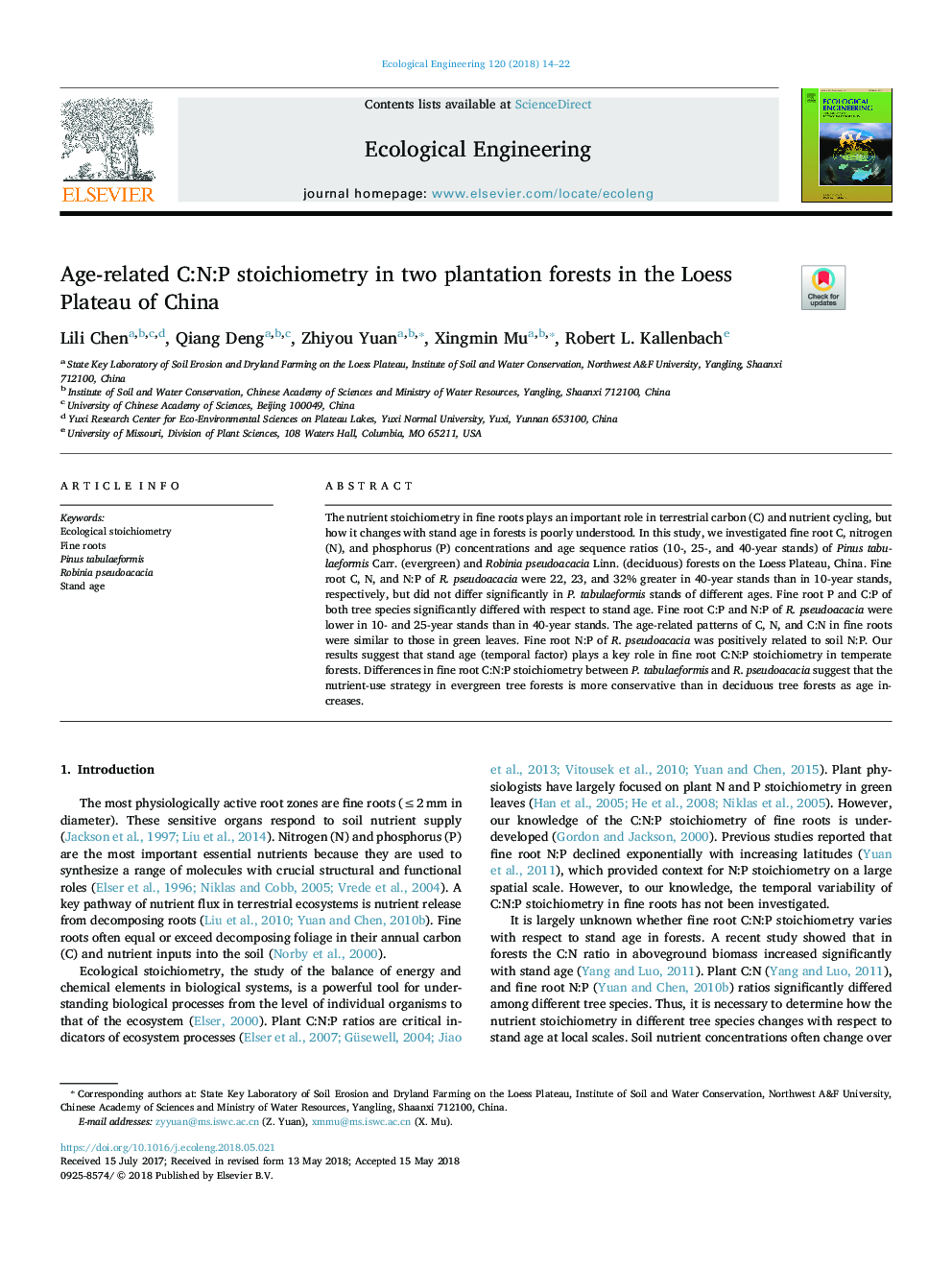| Article ID | Journal | Published Year | Pages | File Type |
|---|---|---|---|---|
| 8847712 | Ecological Engineering | 2018 | 9 Pages |
Abstract
The nutrient stoichiometry in fine roots plays an important role in terrestrial carbon (C) and nutrient cycling, but how it changes with stand age in forests is poorly understood. In this study, we investigated fine root C, nitrogen (N), and phosphorus (P) concentrations and age sequence ratios (10-, 25-, and 40-year stands) of Pinus tabulaeformis Carr. (evergreen) and Robinia pseudoacacia Linn. (deciduous) forests on the Loess Plateau, China. Fine root C, N, and N:P of R. pseudoacacia were 22, 23, and 32% greater in 40-year stands than in 10-year stands, respectively, but did not differ significantly in P. tabulaeformis stands of different ages. Fine root P and C:P of both tree species significantly differed with respect to stand age. Fine root C:P and N:P of R. pseudoacacia were lower in 10- and 25-year stands than in 40-year stands. The age-related patterns of C, N, and C:N in fine roots were similar to those in green leaves. Fine root N:P of R. pseudoacacia was positively related to soil N:P. Our results suggest that stand age (temporal factor) plays a key role in fine root C:N:P stoichiometry in temperate forests. Differences in fine root C:N:P stoichiometry between P. tabulaeformis and R. pseudoacacia suggest that the nutrient-use strategy in evergreen tree forests is more conservative than in deciduous tree forests as age increases.
Related Topics
Life Sciences
Agricultural and Biological Sciences
Ecology, Evolution, Behavior and Systematics
Authors
Lili Chen, Qiang Deng, Zhiyou Yuan, Xingmin Mu, Robert L. Kallenbach,
